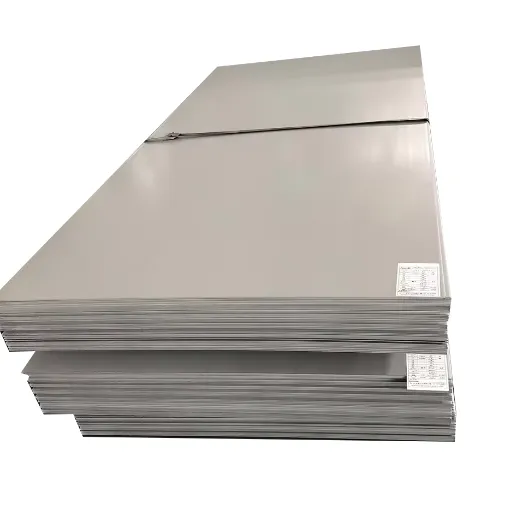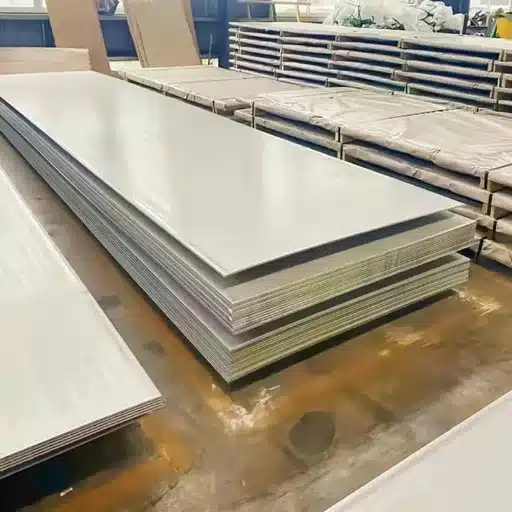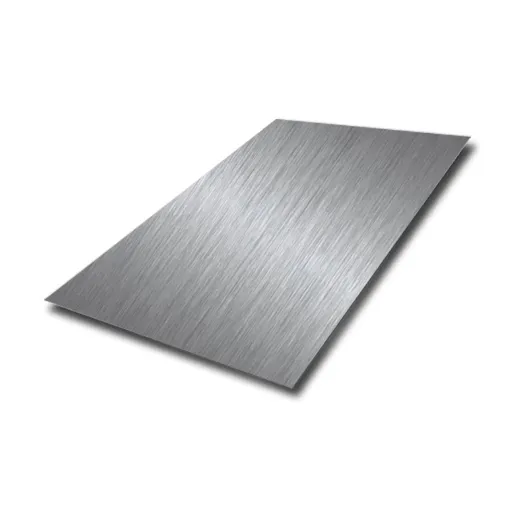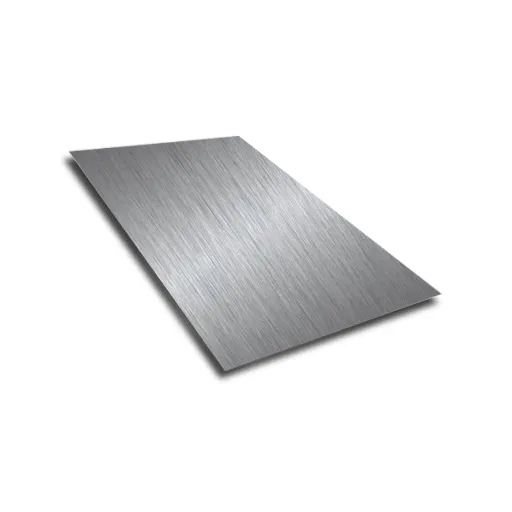Whenever it comes to making decisions on materials for kitchen fixtures and industrial equipment, stainless steel and chrome tend to be the choices that first come to mind. Both materials coexist with every client citing durability, resistance to corrosion, and sleek and modern looks, but then could have a completely different set of advantages and disadvantages for a given application. This article aims to compare the two, focusing on practical differences in performance, maintenance, and environmental suitability. Whether getting ready to select a finish material for a high-traffic industrial space or designing a kitchen that is to stand the test of time, these issues point toward a well-informed and strategically sound choice. Read on to discover which option best suits your needs and why the material plays a significant role.
Understanding the Basics of Stainless Steel and Chrome
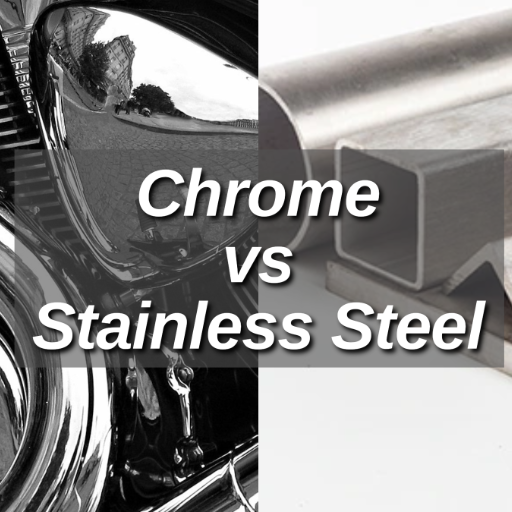
Stainless steel and chrome: both of these materials are recognized by the world’s tradespeople for their durability, strength, and beauty, although they differ in specifications and uses. Stainless steel is primarily composed of iron, chromium, and nickel, making it resistant to corrosion and heat. Its beauty lies in its versatility, as it can be used anywhere and everywhere, from construction work to kitchenware. Each item is strong, making it highly considered due to its ease of cleaning.
On the contrary, “chrome” is an entirely different term for chromium plating of a metal or plastic surface. It is predominantly used for decorative purposes, although it can also provide some degree of corrosion protection. It is a thin coating and wears down fairly quickly when exposed to heavy wear; hence, it is not very durable under heavy use.
Hence, if heavy use is envisioned, then stainless steel is an obvious choice; whereas chrome should be preferred as an ornamental finish where wear is only moderate. Considering this makes it reasonably clear how to make a perfect application choice suitable for a specified need.
What is Stainless Steel?
Made mostly with iron, chromium, and other alloying elements such as nickel, molybdenum, and carbon, stainless steel’s defining feature is its high level of chromium, with at least 10.5% of chromium in the alloy, building a passive chromium oxide layer on the surface. This thin layer is a protective film that forms naturally on the surface, shielding the material from corrosion and oxidation, even in harsh environments. Based on the requirements of a particular grade, stainless steel may also carry various other elements whose addition is aimed at building specific properties into the steel body, such as corrosion resistance, heat resistance, or chemical resistance.
Stainless steel is categorized into different families, such as austenitic, ferritic, martensitic, duplex, and precipitation-hardened stainless steels. For example, austenitic stainless steel, characterized by its high nickel and chromium content, offers excellent corrosion resistance and is widely used in kitchen appliances, medical devices, and architectural structures. On the other hand, ferritic stainless steels are magnetic, less expensive, and commonly applied in automotive exhaust systems and industrial equipment.
What is Chrome?
Chrome is a high-performance web browser developed by Google, promoting fast, secure, and reliable internet browsing. Considering its development as an open-source Chromium project, Chrome has become the most widely used web browser due to its minimalist interface, robust security, and compatibility with nearly all modern web standards. The flipping-fast Blink rendering engine is to blame for the snappy, smooth rendition of web pages, which itself comes with a very wide ecosystem of extensions enhancing functionality. On the other hand, Chrome also cares for its users’ privacy with tools such as safe browsing warnings, password managers, and customizable controls for tracking prevention; shortly after launch, it has been supported on Windows, macOS, Linux, Android, and iOS, and allows users to sync data across all their devices, thus growing to become the world’s most popular web browser.
Chrome Plated vs Polished Stainless Steel
|
Key Point |
Chrome Plated |
Polished Stainless Steel |
|---|---|---|
|
Material Composition |
Thin chrome coating over base material |
Solid stainless steel alloy |
|
Durability |
Susceptible to chipping and wear |
Highly durable and wear-resistant |
|
Corrosion Resistance |
Moderate, may crack and expose base metal |
Excellent, naturally resistant to rust |
|
Maintenance |
Requires careful cleaning to avoid damage |
Low maintenance, easy to clean |
|
Appearance |
Shiny, mirror-like finish |
Smooth, glossy metallic finish |
|
Cost |
Generally more affordable |
Higher initial cost |
|
Surface Hardness |
Hard surface but brittle |
Softer, less brittle |
|
Weight |
Lightweight due to thin coating |
Heavier due to solid construction |
|
Use Cases |
Ideal for decorative purposes |
Suitable for heavy-duty applications |
|
Lifespan |
Shorter, depends on coating integrity |
Longer, resistant to degradation |
Durability and Corrosion Resistance
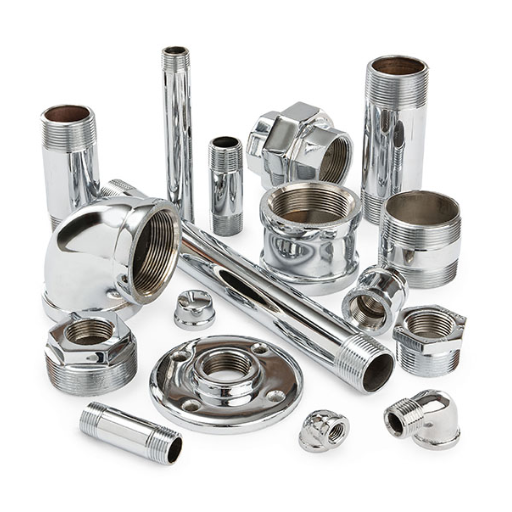
Durability and corrosion resistance must be weighed against each other when comparing coated and solid metal parts. Coated metals depend on the protective abilities of its outermost layer, but once that layer gets damaged,” the material underneath comes in contact with corrosive environmental elements. This would cause less life for the metal and accelerate corrosion. On the other hand, solid metals resist degradation by nature, especially when they are stainless steel or other corrosion-resistant alloys, and this ensures that these can be placed in a rather demanding environment where long-term functionality is a prerequisite. A solid construction guards against wear and tear and environmental stresses, even when subjected to long use, hence ensuring exceptional durability.
Comparing Durability: Stainless Steel vs Chrome
Some corrosion and weather resistance advantages come with durability; stainless steel thus really stands out, considering the significant tolerance it bears to corrosion, oxidation, and tarnishing. Most stainless steels contain chromium ranging between 10.5% and 30%. Upon interaction with environmental factors like moisture, heat, chemical oxidation, and similar, the presence of chromium in the steel creates an oxide layer that exists passively, ensuring the stainless steel receives high protection from such influences. Besides all the above, stainless steel also possesses high mechanical strength, making it generally useful for structural applications in conditions with mechanical stress due to crowning, tearing, rubbing, shock, and other factors. Chrome plating is usually a thin coat of material that hardens the surface and makes it shinier. This plating would stand to stop grating and wear, even corrosion in mild environments. Still, it has its inherent weakness as the plating may chip, crack, or peel under high stresses or in extended environmental extremes. The strength and resistance offered by the base material basically affect how well the chrome-coated products can perform, therefore showing the limitations of the coating in high-demand cases.
Corrosion Resistance: Key Differences
While comparing corrosion-resistance of a variety of materials and coatings, one has to consider the relative performances of these materials and coatings in very specific environments, since not all coatings claim uniform protection. Steel, precisely stainless steel, is an inherently corrosion-resistant material by virtue of the formation of a chromium-rich oxide layer on its surface, which tends to self-heal whenever damaged. Nonetheless, localized pitting corrosion could take place for stainless steel such as grade 304 formulated for use in high-saline or chloride exposures. Other materials would utilize an added surface treatment such as electroless nickel plating, in which case the corrosion protection is better. This is because of the level of coating uniformity and density of the plating, which holds the substrate exposure to oxidizing agents at a minimum. While ceramic or polymer-based coatings provide much higher safety than their traditional metal equivalents in environments filled with aggressive chemicals, they themselves are non-reactive and chemically stable. Considering how well a corrosion-resistant material or coating will work depends heavily on how well it suits the environment and the operational requirements it is subjected to-it goes without saying that selecting the material is a most important engineering step.
Impact of Environmental Factors on Both Materials
The changing conditions of the environment in turn affect the durability and performance of the material fundamentally by means of variables such as temperature, humidity, and level of contaminants. Each of these factors may or may not be present in a drastic way. For example, high temperatures favor the oxidation of metals in an environment with high oxygen concentration, thereby forming scales that contribute to the loss of structural integrity. On the other hand, abrupt thermal cycling may cause stress fractures within the metals or the coatings due to the different coefficients of thermal expansion. These will gradually lessen the ability to stand against wear.
Polymeric and ceramic-type coatings generally will give better performance, however, when high humidity or chemically aggressive environments are factors. Polymers are mostly resistant to attack by acids or alkalis but do degrade mechanically under UV-light and at extreme temperatures. Albeit ceramic coating exhibits excellent corrosion and thermal shock resistance, extended moisture exposure combined with mechanical stress may cause micro-cracks, which in turn severely impact the long-term reliability.
Cost Analysis: Stainless Steel vs Chrome
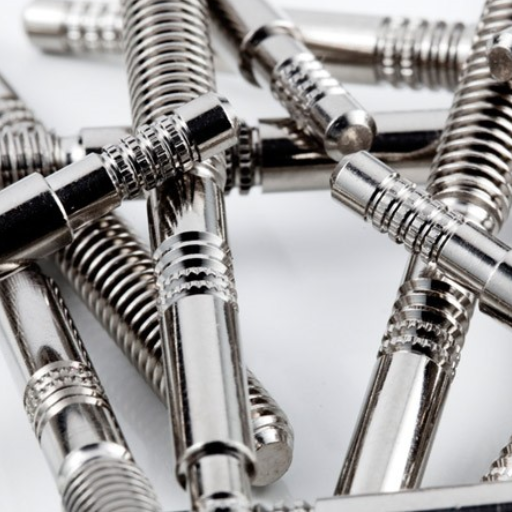
When putting up a cost comparison between stainless and chrome, consideration must be given to the respective initial costs, maintenance, and lifespan. Expectedly, in terms of initial price, stainless steel costs more on the grounds of its being strong and corrosion-resistant. So the actual requirements for expensive investment are high-performance needs. Chrome, in all probability, will be the cheapest first than if it has to be maintained or redone after fairly short periods, especially in areas open to wear and corrosion. Stainless steel with a longer service life and with almost negligible maintenance requirements could well present the best cost option in the long run, particularly in industries or areas of high stress. On the other hand, Chrome might be the cheaper choice for environments requiring appearance and light duty. Ultimately, the answer depends upon particular budget constraints and intended use cases.
Initial Costs of Materials
The initial costs of stainless steel and chrome differ substantially, due to differing material properties, processes of manufacture, and market factors. Stainless steel, having an inherent composition comprising chromium, nickel, and even other elements that alloy with one another to provide strength and resistance to corrosion, began a step-up in price. These elements make stainless steel hard to work with, thereby increasing the price.
Chrome, on the contrary, being mostly a plating material, is relatively inexpensive upfront. The biochemical applications of the plate electroplating method that deposits a chrome layer onto a substrate like steel or plastic ensure the relatively low cost of chrome. The cost of the substrate used might further affect the overall material expense level.
Market trends and sudden fluctuations within the global supply chain, together with demand for raw materials such as chromium and nickel, will duly affect price trends. While nickel is a critical component of stainless steel, any increased demand or short supply for this one raw material, on the one hand, might cause price volatility. Buyers, therefore, must assess both the initial cost and the long-term value before opting for one material for the chosen application.
Long-Term Value and Maintenance Costs
Considering the materials in terms of life-cycle costs and maintenance, the focus should be drawn to the performance of the material over time in the specific conditions it will be operating in. Stainless steel, known for its excellent corrosion resistance, durability, and minimum maintenance requirement, is the best choice in any aggressive or harsh condition when compared to chrome. Studies show that stainless steel can preserve structural integrity and appearance for decades, even when exposed to moisture, chemical agents, or abrasive elements, hence reducing the need for replacement and upkeep altogether, signifying lower total ownership costs.
Conversely, in preserving its aesthetics and protecting from degradation, chrome finishing might require quite more frequent maintenance, especially when the protective layer undergoes sufficient wear or faces strong corrosive agents. The initial cheaper price for the maintenance with chrome will surely to cost more from time to time because of this. Based on research made with a lifecycle cost perspective between these materials, it is no wonder that stainless steel outperforms the other one most of the time when there is really a need for materials that are tough and need little maintenance. It is these cost analyses in the time domain that make stainless steel the best choice for tough applications.
Where to Save: Choosing Between Chrome and Stainless Steel
In comparison to chrome, stainless steel is the more suitable choice for style in a corrosive environment due to its more natural resistance against oxidation and chemical attack mechanisms. This resistance is created by the layer of chromium oxide created on stainless steel in nature, which forms a nice protective coat against moisture and aggressive chemicals. With a smooth-and-cream aesthetic finish and moderate resistance to corrosion, chrome is apt to have various pit and degrade under conditions of prolonged exposure to being aggressive, like those under the cast of saltwater and industrial chemicals.
Maintenance Requirements
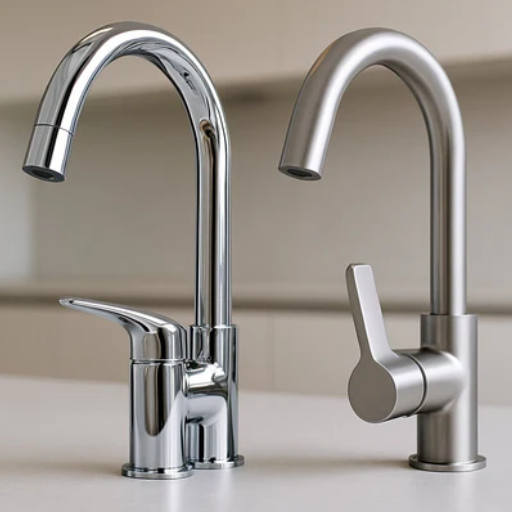
Where maintenance is concerned, stainless steel is almost a no-maintenance material if compared to many other materials. A simple wipe here and there with some mild soap and plenty of water will often do away with any surface accumulation and keep the surface looking good. For those contaminants or stains more severe, it is good to use a non-abrasive cleaner formulated for stainless steel. Beware of harsh chemicals or steel wool applications since they will tear away the oxide protective layer; this may later fast track corrosion. Regular inspections looking out for scratches or potential spots of corrosion should go a long way for performance under long-term use. Exposure to situations with a lot of salt or chemicals should call for frequent rinsing of the surface with fresh water to decrease wear and extending life.
Cleaning and Care for Stainless Steel
To keep the stainless steel sounding good and functional, cleaning discoloration remains of high importance. Discoloration is due to heat tints, chemical residues, or hard water staining. These can be wiped off with mild cleaners specifically made for the surface. Clean microfiber cloths or soft sponges can complete the job of cleaning without leaving any slight streaks or scratches.
For commercial and industrial usage, the passivation treatment can also restore the chromium oxide layer for corrosion resistance. With improvements in cleaning techniques, such as entertaining electrolytic polishing, one can solve technical problems in regions undergoing intense wear or have severe operating conditions. In turn, a routine cleaning program, developed based on environmental exposure and utilization of the stainless steel, will greatly aid in prolonging its service life.
Sealants or protective coatings bring another layer of protection against harsh elements that may otherwise expose the stainless steel to contaminants, which will ensure that the stainless steel retains its original finish and structural integrity in demanding circumstances.
Maintaining Chrome-Plated Items
Applications and Suitability

Best Uses for Stainless Steel in Kitchens
Widely termed one of the most practical and reliable materials available for kitchen implementation, stainless steels stand out due to their strength, hygiene, and corrosion resistance. Its non-porous nature would prevent liquids and germs from getting absorbed, thus making it an ideal option for countertops, sinks, and areas for food preparation of any sort, especially in a high-traffic area or sanitary grade kitchen. Further use of stainless steel appliances like refrigerators or ovens gained popularity as they are highly resistant to heat and stains and hence do not wear out in strenuous conditions. Modern stainless steel design innovations have helped develop fingerprint-resistant coatings and structurally enhanced alloys, further fine-tuning and upgrading performance and appearance. Thus, incontrovertibly, stainless steel continues to be one of the indispensable building blocks in kitchens, be it residential or commercial, weaving together performance and aesthetic in the form of a sleek, professional outlet.
Ideal Scenarios for Chrome Usage
Chrome is, for that matter, a perfect match in scenarios demanding high-performance levels and inter-device seamless integration. Being equipped with a modern and fast rendering engine, Chrome quickly renders pages, therefore, providing the fastest solutions in environments where speed is paramount, such as interpreting the browser as a development tool, building an e-commerce platform, or enabling real-time communications. Chrome further provides extensive support concerning web standards and enormous support for extensions, making it one of the most adaptable browsers, either for an everyday user or a businessman looking for something more flexible; the browser also shines in security features, covering sandboxing, automatic updates, and efficient phishing prevention, making it the perfect choice for situations involving highly sensitive data and security. Integration of synchronization across Google accounts is the feature that makes the utility capable of moving between business and personal realms.
Comparing Performance in Industrial Settings
In industrial environments, the performance of browsers is evaluated based on speed, compatibility, and handling efficiency under demanding workloads. This analysis reveals that the browser excels in the execution speed of scripts and page rendering times. These factors are crucial in industrial applications, enabling transparent access to web-based software tools and databases, thereby facilitating real-time access to enhance workflow efficiency.
Additional factors related to its compatibility with industrial-grade applications and platforms have been exhaustively tested, pushing this browser beyond most competitors due to its maintenance of modern web standards and support from developers. The ability to ensure that large-scale enterprise systems that mostly rely on complex implementations of web-based architectures run smoothly without interruptions or compatibility issues basically means reduced downtime.
Reference Sources
-
- Key Findings: This study explores the metallurgical use of magnesium oxide in creating resistance to decay and enhancing shine in alloys, including stainless steel and chrome plating.
-
“Diffusion of nitrogen in austenitic phase: Application to nitriding of stainless steels”
- Key Findings: The study investigates the nitriding process of stainless steels to enhance surface hardness and introduce compressive stresses while maintaining the stainless properties of the nitrided layer.
-
“The ability to clinching as a function of material hardening behavior”
- Key Findings: The study examines the clinching ability of high-alloy chrome-nickel stainless steel (X5CrNi18–10), finding that it does not form durable clinch joints due to the lack of deformation in the clinching area.
Frequently Asked Questions (FAQs)
Q: What is the difference between chrome and stainless steel?
A: The difference between chrome and stainless steel primarily lies in their composition and properties. Stainless steel is an alloy made primarily of iron, carbon, and chromium, while chrome refers to a thin layer of chromium that can be applied over another metal. Stainless steel is known for its strength and corrosion resistance, making it a popular choice for kitchen designs and stainless steel faucets. In contrast, chrome offers a shiny finish that enhances the aesthetic appeal but may require more frequent cleaning due to its reflective surface. Ultimately, the choice between these materials depends on specific needs and aesthetic preferences.
Q: Is stainless steel better than chrome for kitchen designs?
A: When comparing chrome vs stainless steel for kitchen designs, stainless steel is often favored due to its durability and ease of maintenance. Stainless steel is generally long-lasting and prevents rust and corrosion, making it a practical choice for steel kitchen applications. Chrome, while visually appealing with its shiny finish, can corrode over time if not maintained properly. Additionally, stainless steel’s matte finish can blend well with various styles, while chrome’s decorative finish may not suit all aesthetics. Thus, for functionality and longevity, stainless steel is often the better option in kitchen environments.
Q: What are the corrosion resistance properties of chrome and stainless steel?
A: Corrosion resistance varies significantly between chrome and stainless steel. Stainless steel’s alloy composition, enriched with chromium, offers superior protection against rust and corrosion, which is crucial in environments like kitchens and bathrooms. Chrome, on the other hand, is primarily a decorative finish applied over other metals and may corrode more easily if the underlying metal is not adequately protected. While chrome can provide some level of corrosion resistance, it does not match the inherent properties of stainless steel. Therefore, for applications where corrosion resistance is a primary concern, stainless steel is the recommended material.
Q: What are the disadvantages of stainless steel compared to chrome?
A: While stainless steel offers numerous advantages, it does come with some disadvantages compared to chrome. One major downside is the upfront cost; stainless steel is generally more expensive due to its alloy composition and manufacturing process. Additionally, while stainless steel is easier to maintain, it can still show fingerprints and smudges, requiring frequent cleaning to maintain its appearance. Chrome, with its shiny finish, may require less effort to keep looking pristine but can be more susceptible to scratches and wear over time. Ultimately, the choice between chrome and stainless steel should consider both the initial investment and long-term maintenance needs.
Q: Are stainless steel faucets better than chrome faucets?
A: When comparing stainless steel faucets vs chrome faucets, stainless steel faucets typically outperform chrome in terms of durability and maintenance. Stainless steel is known for its strength and corrosion resistance, making it an ideal choice for areas exposed to water. Chrome faucets, while visually appealing and often less expensive, may require more frequent cleaning to maintain their shine and can corrode if not properly cared for. Furthermore, the reflective surface of chrome can show water spots more easily than stainless steel. For long-lasting performance and a sleek look, stainless steel faucets are often considered the superior option.

